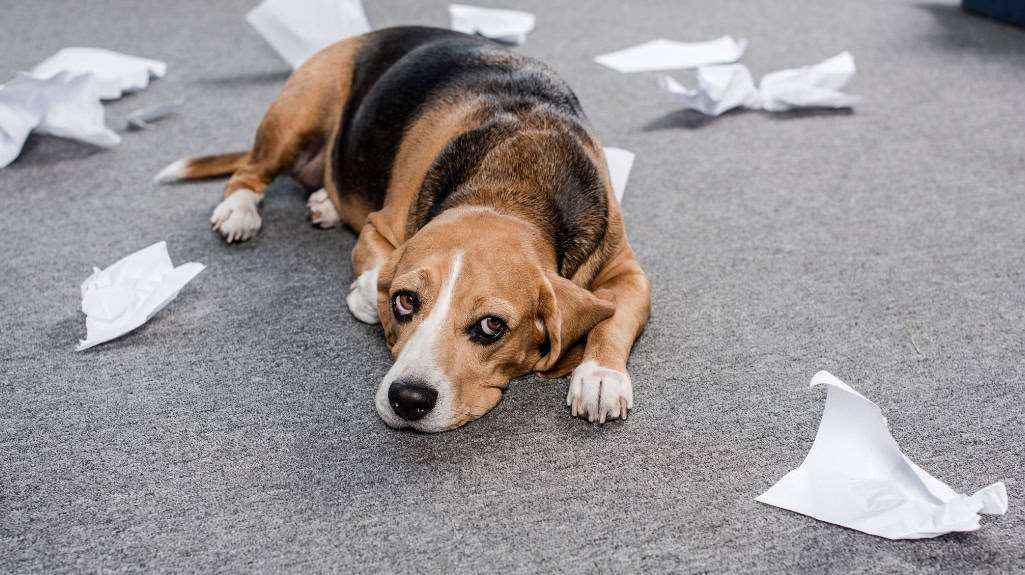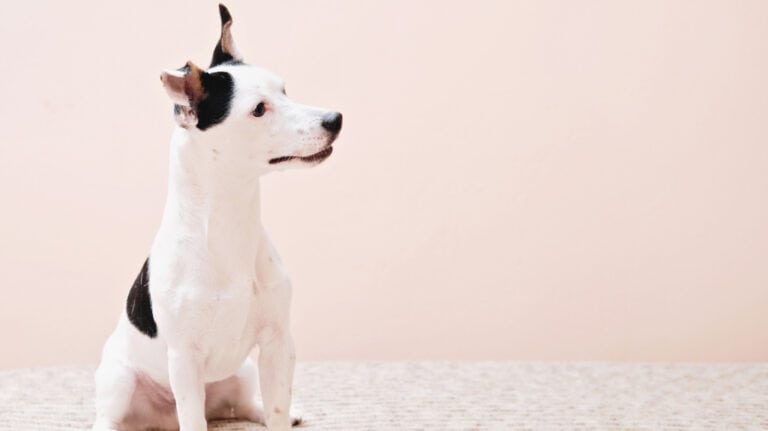The Do’s and Dont’s of Managing Dog Separation Anxiety
The Pet Coach features affiliate links and participates in the Amazon Services LLC Associates Program. If you choose to make a purchase through one of these Amazon links, I may earn a small commission—at no additional cost to you. These affiliate earnings help support the website and allow me to continue providing free content for pet parents. For more details, please see my disclosure policy.
Is your dog destroying the house while you're out? Maybe they're barking non-stop, or having accidents despite being perfectly house-trained? If this sounds familiar, you're likely dealing with canine separation anxiety – and you're not alone.
Managing separation anxiety in dogs is one of the most common challenges UK pet owners face, with the RSPCA reporting that a staggering 8 out of 10 dogs struggle when left home on their own.
Whether you've just noticed the signs or you're at your wit's end trying to help your dog cope when home alone, this guide will walk you through everything you need to know about managing your dog's separation anxiety effectively.
You needn’t be on your own with this, get in touch or book a call to talk to me about help for your dog right now.

What is canine separation anxiety?
Separation anxiety, also known as isolation distress separation-related behaviour (SRB) or separation relations problems (SRP), plus a heap of other names, occurs when dogs experience frustration, anxiety or distress from being left alone, and yep, often it’s a combination of all three!
As naturally social animals, dogs thrive as part of a family unit, making isolation particularly challenging for them, we literally created them to want to be with us, it’s no surprise they don’t like being apart from us.
Recognising the signs of separation anxiety
Dogs communicate through their body language, so learning to read your dog and what they are saying (and feeling) when you’re gone is so important.
Common indicators include:
- Destructive behaviour, especially near exits
- Howling, barking, or whining
- Toileting accidents despite being house-trained
- Excessive excitement when you return
- Anxiety signs before departure
Less obvious signs to watch for:
- Trembling and panting
- Excessive salivation
- Self-injury (excessive paw licking)
- Repetitive behaviours
- Not eating when alone

Essential management strategies
Follow these tips to help leave your dog without stress.
1. Create a Safe Space
- Designate a comfortable, quiet room
- Close curtains to reduce external triggers
- Use background noise like radio to muffle outside sounds
- Ensure the space is familiar and comfortable
I recommend this window film to block out any visual triggers like people or dogs walking past the house, no-one needs a window watcher getting riled up when you leave the house!
2. Establish a Positive Routine
- Take your dog for a walk before leaving – they need to sniff, and be a dog for a good part of the day, don’t forget that!
- Return 30 minutes before departure to ensure they're not hungry
- Provide appropriate mental stimulation and enrichment so they aren’t bored
- Keep departures and returns low-key and no big deal
Check out my article on my favourite dog enrichment toys from West Paw

3. Gradual Training
Start with brief periods alone and slowly increase duration, as they get more comfortable with departures. This helps your dog learn that being alone for short periods is temporary and safe, and that you'll return before they become anxious.
Remember that rushing this process can be counterproductive, increasing the time too soon will make your dog more sensitive to being left, not less, and they will becomes distressed sooner.
Important Don'ts:
- Never punish your dog for anxiety-related behaviour
- Avoid letting them ‘cry it out' – this can cause long-term psychological damage, and it just doesn’t work
- Don't leave them alone for more than four hours (less for puppies) even if they seem fine, get a dog walker or pet sitter in to break up their day on their own
- Don’t assumer they’ll grow out of it – you need to be proactive about changing how they feel to being left alone to see long-lasting change.
- Food toys are great, they help stretch your dog's cognitive skills, but they won't fix separation anxiety on their own, and many dogs either refuse food when you're done, or they eat like crazy.
Learn more in my article why I don't use food toys in departure training.
Professional support for dog separation anxiety
If these basic management strategies aren't working, then consult a professional, and your veterinarian. certified separation anxiety trainers (CSATs) are specifically trained in this type of work to help dogs cope with being home alone, you often find many behaviourists who will also specialise in separation anxiety.
Prevention of separation anxiety for new dog owners
The best approach is preventing separation anxiety from developing by teaching your puppy home alone skills:
- Create positive associations with alone time from the start
- Gradually introduce periods of separation when they are ready
- Establish a consistent routine
- Ensure adequate physical and mental stimulation – think about what your dog is bred to do, and how many hours a day they should be active for.
Remember that separation anxiety is both preventable and treatable. With patience, consistency, and the right approach, most dogs can learn to feel more comfortable when left alone.

Long-term management solutions
For some dogs, the training process can take quite a while, and you’ll need to think about wrap around care so that they aren’t left alone longer than they can cope with.
Consider using a dog sitter or dog walking service if you need to be away for extended periods and outside of training sessions. This can help ease stress and provide necessary companionship during your absence.
Can you take your dog to work? Work from home some days? Do doggy play dates and swap dog care with a friend or neighbour?
There are always ways to help suspend absences, so your dog gets the company they need, and you don't feel panicked and overwhelmed, I work through this with my clients to help support them when they need it.
Learn more in my article all about pre-departure cues, and using herbs to help support separation anxiety training.






